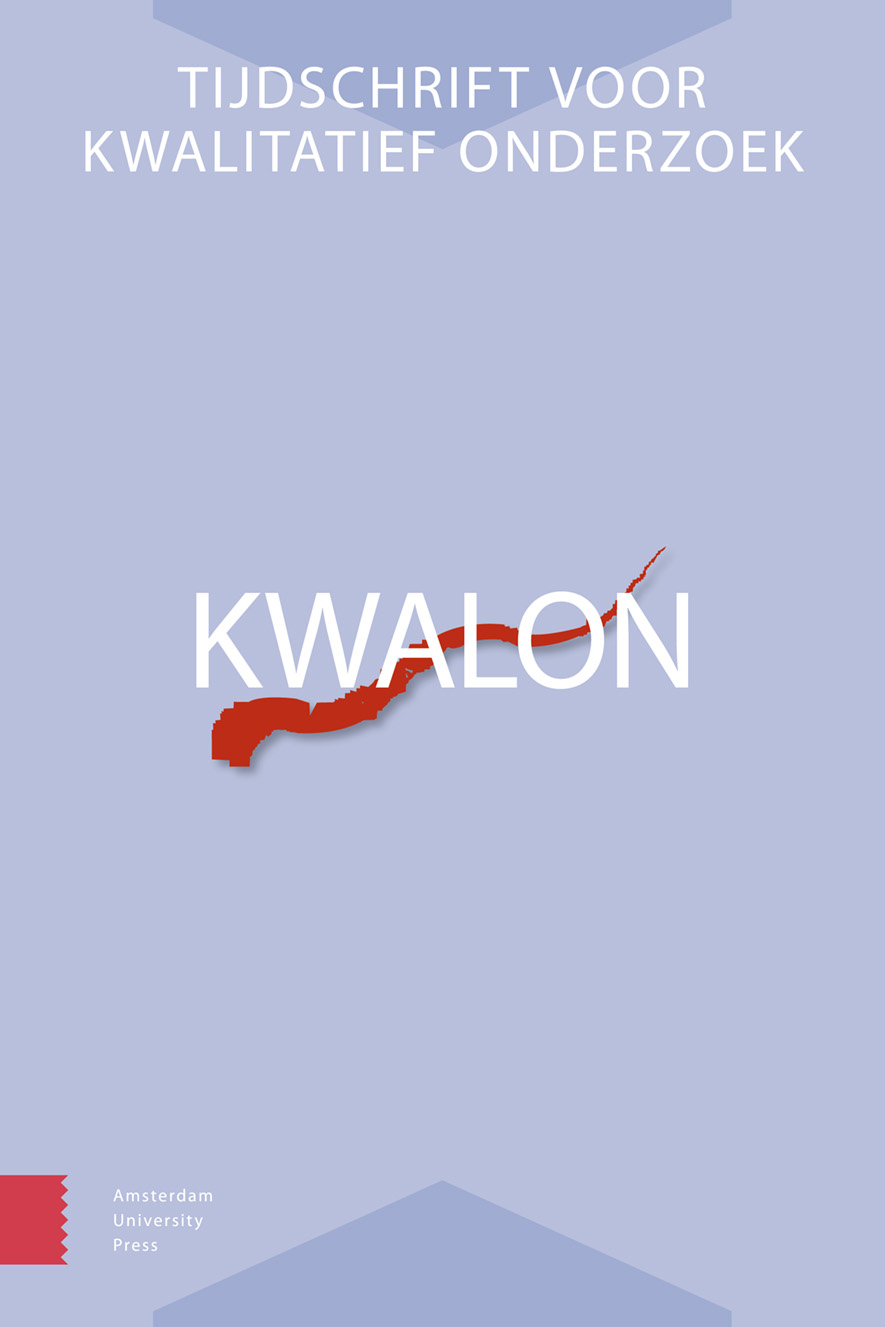- Home
- A-Z Publications
- KWALON
- Previous Issues
- Volume 25, Issue 3, 2020
KWALON - Volume 25, Issue 3, 2020
Volume 25, Issue 3, 2020
Language:
Dutch
-
-
oa Over populaire methoden in kwalitatief onderzoek naar gezondheid(szorg)
More LessAuthors: Jeanine Evers & Ilse van LiemptOn popular methods used in qualitative research into health and care; trends in the 25 years of the KWALON journal This introduction summarizes the different articles in the current issue of KWALON and describes variations in qualitative methods reported in health research discussed in KWALON over the last 25 years.
-
-
-
oa Dertig jaar kwalitatief onderzoek naar gezondheid en zorg: een insiders perspectief
More LessAuthors: Hennie Boeije & AnneLoes van StaaThirty years of qualitative research into health and healthcare: an insider’s perspective This paper offers a personal reflection of two researchers on the development of qualitative research in health and healthcare in the past thirty years in the Netherlands. We explore the rise in international publications, as well as the themes that researchers address and the methodologies they use. We conclude that in recent decades the i Read More
-
-
-
oa Samen veranderen is samen leren
More LessAuthors: Nicolien Kromme, Kees Ahaus, Rijk Gans & Harry van de WielChanging together is learning together. A participatory action research project on the role of the internist in promoting a healthy lifestyle This article describes the first three stages of an action research project. Following eight methodological principles of participatory action research, this article aims to give insight in the nature of the challenges and dilemmas involving internists, patients and patient representatives in the r Read More
-
-
-
oa Actieonderzoek in leefstijlonderzoek is geen sinecure
More LessAuthors: Famke van Lieshout, Gaby Jacobs & Shaun CardiffAction research in lifestyle research is no sinecure. Response to Kromme et al.: ‘Changing together is learning together’, a participatory action research project This is a reply to the contribution entitled: ‘Learning together is changing together: A participatory action research project on the role of the internist in promoting a healthy lifestyle’. Here the authors highlight the complexity of facilitating participatory action researc Read More
-
-
-
oa Taal doet ertoe
More LessAuthors: Nicolien Kromme, Kees Ahaus, Rijk Gans & Harry van de WielLanguage matters. Response to the reply of Van Lieshout et al., ‘Action research in lifestyle research is no sinecure’ In our response we further clarified how we interpreted and applied the contextuality, participation and reflexivity principles of action research. We also further explained our suggestions to adapt the framework/research cycle and how we understood the various terms used in the framework. As could be expe Read More
-
-
-
oa Belichaamde ervaringen van patiënten met ernstige chronische vermoeidheid na kanker
More LessEmbodied experiences of patients with severe chronic fatigue after cancer. An interpretive phenomenological study This article presents a phenomenological study on embodied experiences based on interviews with 25 patients with severe chronic cancer-related fatigue (CCRF). Insight into the patient’s perspective can help to facilitate personalized treatment in CCRF. Theoretically resorting to philosophical phenomenolo Read More
-
-
-
oa Mixed methods-onderzoek om beweging en slaap van ouderen in kaart te brengen
More LessAuthors: Julie Vanderlinden, Sabine Lambers, Reninka De Koker & Liza MuschMixed methods to measure movement and sleep in the elderly Movement and sleep are both crucial for the elderly in terms of healthy ageing. Staying physically active as people age is positively associated with better sleep and health outcomes. But despite the growing attention to healthy ageing, the elderly don’t always keep up with the applicable guidelines in terms of movement. Furthermore, health workers don’t always Read More
-
-
-
oa Van jonge topsporter naar chronische pijnpatiënt
More LessAuthors: Mariëlle Goossens & Bodile MolenaarFrom young elite athlete to chronic pain patient. A reflection on working with students as a researcher A qualitative study on the (psychological) characteristics of young, former elite athletes with chronic, non-specific pain complaints was initiated to answer the following questions: (1) Which factors could play a role in the development of chronic, non-specific pain in young, former elite athletes? And (2) How can we optimize t Read More
-
Volumes & issues
-
Volume 29 (2024)
-
Volume 28 (2023)
-
Volume 27 (2022)
-
Volume 26 (2021)
-
Volume 25 (2020)
-
Volume 24 (2019)
-
Volume 23 (2018)
-
Volume 22 (2017)
-
Volume 21 (2016)
-
Volume 20 (2015)
-
Volume 19 (2014)
-
Volume 18 (2013)
-
Volume 17 (2012)
-
Volume 16 (2011)
-
Volume 15 (2010)
-
Volume 14 (2009)
-
Volume 13 (2008)
-
Volume 12 (2007)
-
Volume 11 (2006)
-
Volume 10 (2005)
-
Volume 9 (2004)
Most Read This Month
Article
content/journals/13851535
Journal
10
5
false
en


